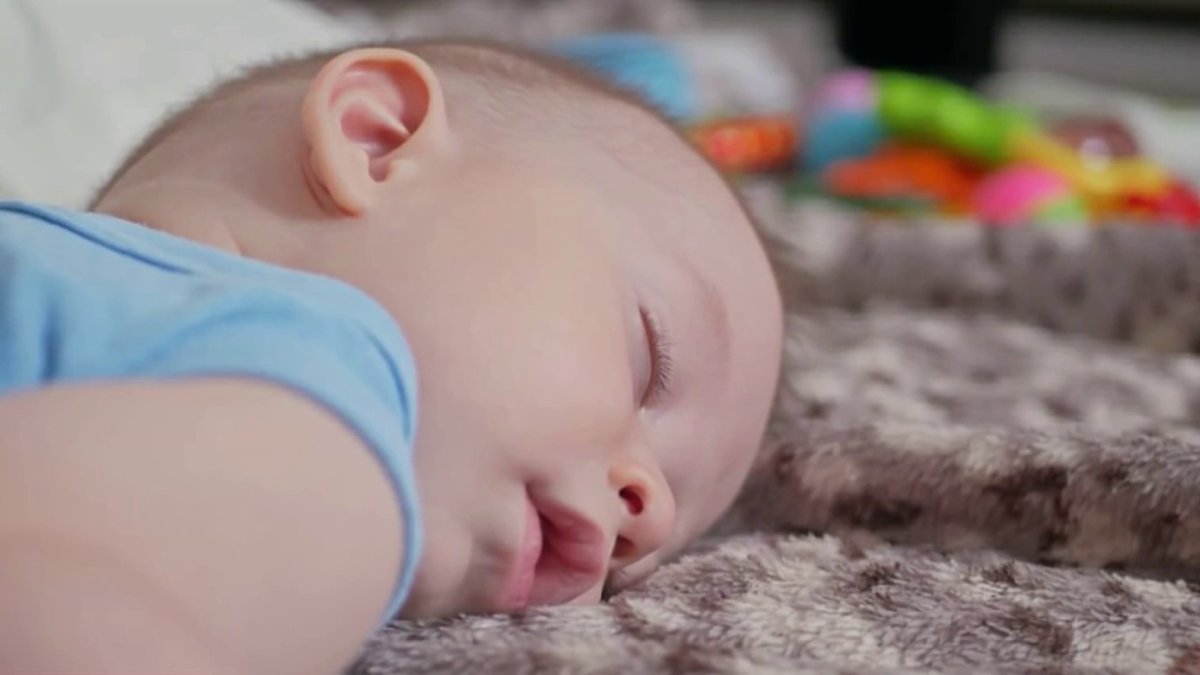
The Snoo, a smart device that helps babies sleep, works so well that some parents need help transitioning their babies to a crib. News4’s Doreen Gentzler spoke to a sleep consultant about tips for families.
Many parents swear by the SNOO to help their babies sleep during those early months that are often filled with fussing and crying, but it can be tricky to transition little ones out of the smart sleeping bassinet and into a crib.
According to the company, babies who use the SNOO often sleep for nine hours or more by the time they're 2 to 3 months old.
"It was developed by Dr. Harvey Karp as an additional way to help soothe your baby," Dr. Kelsey Alford, a D.C.-area sleep consultant and owner of Nested Sleep, told News4.
The smart sleeper bassinet is designed for babies up to 6 months old and automatically responds to a child's fussing with soothing sounds and motion, helping to calm a baby's cries without any assistance from mom or dad.
We're making it easier for you to find stories that matter with our new newsletter — The 4Front. Sign up here and get news that is important for you to your inbox.
But that extra sleep for parents doesn't come cheap. A SNOO costs about $1,700 brand new, or families can rent one for a monthly fee of $99 to $159.
Some say the SNOO works so well that they had trouble transitioning their babies to sleep in a crib.
"You want to transition before a baby gets so used to it and so comforted by it that it's hard to get out of that. And that happy window is, I think, like, three to four months, versus waiting until that full six months of time," Alford said.
Local
Washington, D.C., Maryland and Virginia local news, events and information
Alford said she encourages her clients to start with subtle changes to their baby’s sleep routine.
"Start with the first nap of the day because the first nap of the day, baby is not over-tired yet. They're not overstimulated from the day. It's a good time to practice those sleep skills," she said.
She also encourages parents to stop swaddling their baby during that time to help them develop their own sleep skills.
Another tip: Babies don't have to move into the nursery right away once they're out of the SNOO.
"A lot of parents think that it's just the SNOO or it's just the baby sleeping in the nursery. They absolutely can sleep in a pack and play for a period of time within the parents' room, and that allows them in a bigger sleep space, allows them to roll around, get used to their new environment," Alford said.
No matter what parents decide, Alford said it's important to come up with a plan before switching out of the SNOO.
"You're not gonna want to jump into making a game plan at 1 a.m. because you're both exhausted. You're both, like, 'I just need this baby to get to sleep,'" she said.
"That can be just talking as parents and coming up with that game plan. That can be reading some books or that can be working with a sleep consultant. There's many different options."
Happiest Baby, the maker of SNOO, sent the following statement:
"Happiest Baby has tracked over 400 million hours of safe sleep with hundreds of thousands of babies using SNOO to date. In addition to soothing babies with responsive white noise and rocking, SNOO keeps babies secured safely on the back, preventing them from rolling into an unsafe position (it's especially worth noting that the risk of SIDS is at its peak at 3-4 months). SNOO is designed to be used by babies up to six months old and includes a built-in weaning feature to help babies transition to the crib, and it's uncommon for infants to have any difficulty weaning from SNOO. No data suggests that SNOO is addictive or harmful to babies in any way."